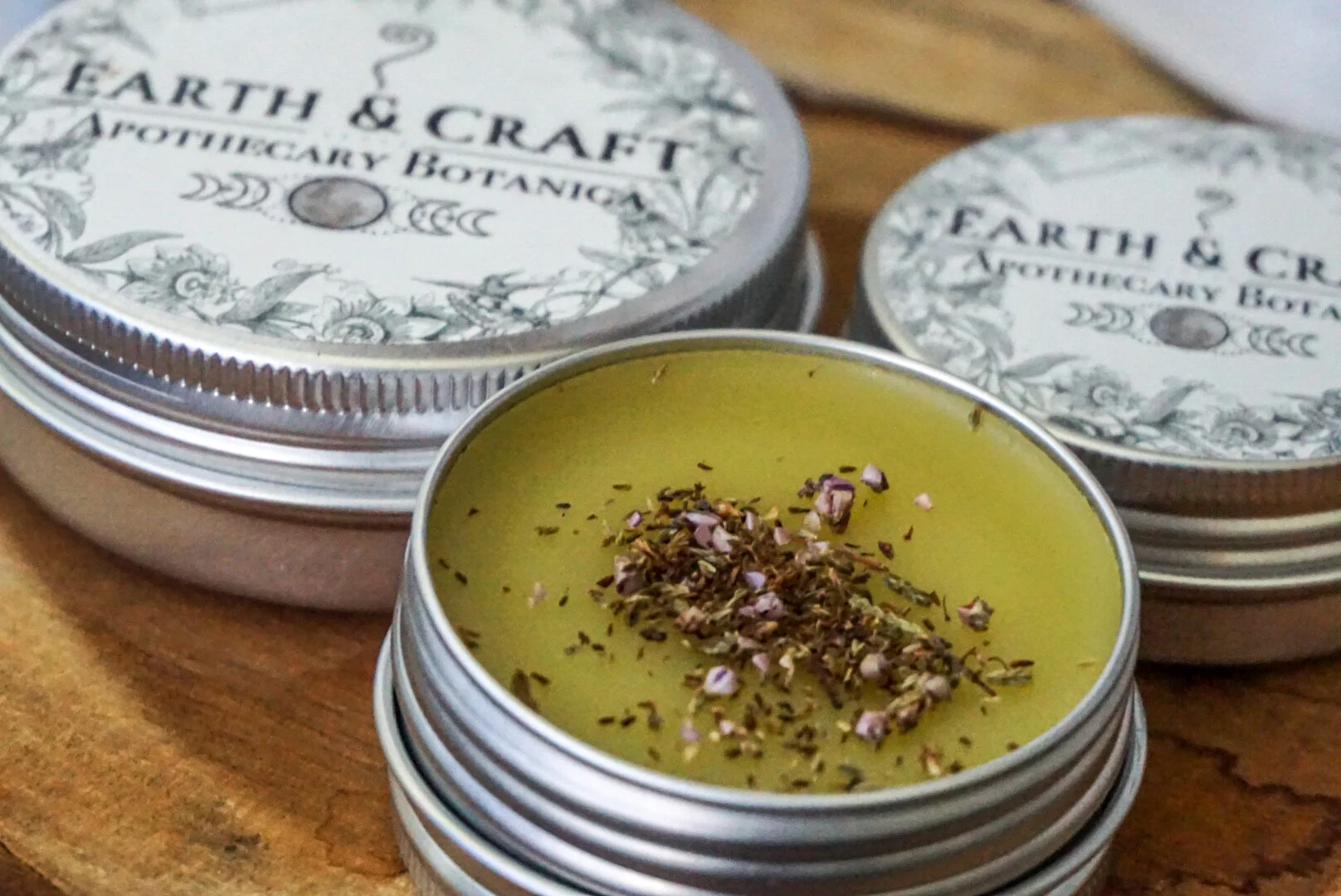Arnica
With its daisy-like yellow, orange blooms and homeopathic history of healing for many centuries, Arnica montana is an obvious choice for a topical healing salve. Arnica is from the family Asteraceae and is commonly known as European Arnica, Leopard's Bane, Mountain Arnica, and Mountain Tobacco (1). The part used is the flower head, which is one of the best external remedies to heal and control bruising, reduce swelling, heal sprains and wounds, and promote recovery after local trauma. In North America Native Americans used broadleaf arnica (Arnica latifolia) and heartleaf arnica (A. cordifolia) for its anti-inflammatory and antiseptic properties to externally treat muscle aches, sprains, joint pain, swelling, and bruises (1). Arnica's properties include: anti-inflammatory, rubefacient, counterirritant, analgesic, anti-bacterial, and antifungal; most of its effects are attributed to sesquiterpenoid lactones (4). Arnica has been shown to be an immunostimulant, as both the sesquiterpene lactone helenalin and the polysaccharide fraction stimulate phagocytosis (3).
Arnica is for external use. Traditionally, the flowers were soaked in water and melded into a poultice that was then applied to the injured area. It can be prepared in a solution, ointment (for unbroken skin) for inflammations, including insect bites, fungal infections, boils, and rheumatic pains. Caution should be taken if the area to be treated is open (i.e. open wound or ulcer) as Arnica may cause allergic dermatitis to those persons hypersensitive to other Asteraceae plants (such as chamomile, feverfew, ragweed, tansy, and yarrow). *Arnica should not be used internally as it is potentially toxic! Under a trained herbalist one could use an arnica-based solution to gargle to combat a throat or mouth infection but extra caution should be taken so that none of the solution is ingested.
European herbalists have also been using arnica for centuries, and only in the last 40 years have researchers finally isolated the compound in arnica that produces the pain-killing properties. Some randomized clinical trials have demonstrated that topical arnica can be effective for the treatment of osteoarthritis of the hand or knee. In one study, 53 women and 26 men applied arnica gel to their affected knees twice a day for six weeks and found a significant improvement in pain and stiffness. In another clinical trial a gel containing 50 grams tincture of arnica per 100 grams of gel was as effective at relieving hand osteoarthritis as a 5% ibuprofen cream. The fact that helenalin is an anti-inflammatory sesquiterpene lactone might help account for the value of arnica for pain and inflammation (3).
Our Earth & Craft Arnica Salve is double-infused (olive oil based) and used in combination with therapeutic grade essential oils of Wintergreen and Copaiba.
References:
Balick, M. J., & Weil, A. (2013). Rodale's 21st-century herbal: A practical guide for healthy living using nature's most powerful plants. Emmaus, PA: Rodale.
Braun, L., & Cohen, M. (2015). Herbs and natural supplements: An evidence-based guide. Edinburgh, Scotland: Churchill Livingstone.
Hoffmann, D. (2003). Medical herbalism: The science and practice of herbal medicine. Rochester, VT: Healing Arts Press.
Skenderi, G. (2004). Herbal vade mecum: 800 herbs, spices, essential oils, lipids, etc., constituents, properties, uses, and caution. Rutherford, NJ: Herbacy Press.
*All material provided on this site is for educational purposes only, and not to be construed as medical advice. These statements have not been evaluated by the Food and Drug Administration. This product is not intended to diagnose, treat, cure, or prevent any disease.



